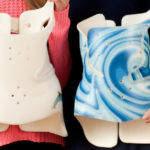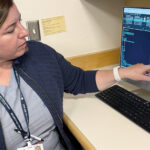A new treatment option for Jeanne’s infantile scoliosis
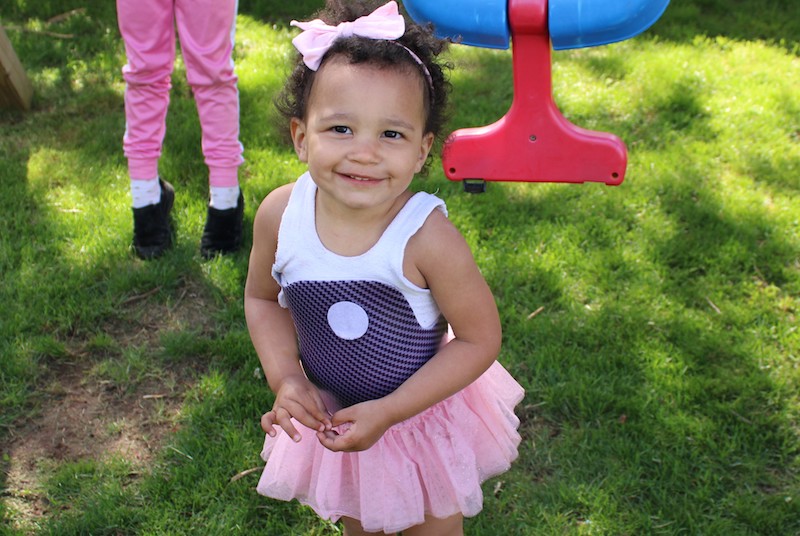
If it hadn’t been for the pandemic, Jeanne McDaniel’s treatment for infantile scoliosis would have started when she was 11 months old. Instead, COVID-19 became the first in a series of events that delayed her treatment — and allowed her scoliosis to progress — for months. When her parents sought a second opinion at Boston Children’s Hospital, they discovered a new option.
Infantile scoliosis and the window of opportunity
Like her four older siblings, Jeanne started to walk early. When she did, in January 2020, her mother Monica noticed a hump in her back. Jeanne was 8 months old.
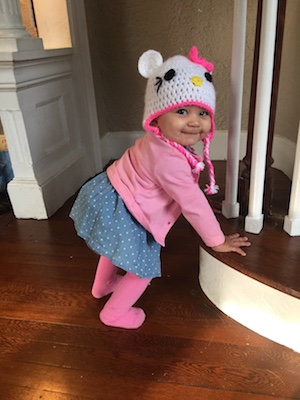
A pediatric orthopedist in New York City told her parents that Jeanne had a 34-degree curve in her spine. Monica and Stefan scheduled a follow-up visit for April when, in all likelihood, Jeanne would be put in a cast. The procedure would require general anesthesia. And each time she needed a new cast, she would be put under general anesthesia again. Her parents didn’t like this idea, but it seemed like the only option.
But COVID-19 delayed Jeanne’s first casting appointment. In June, a skin infection on her torso forced a second postponement. Ideally, treatment for infantile scoliosis begins as early as possible. The longer treatment is delayed, the more scoliosis can progress. Knowing this, Monica grew increasingly concerned when the spine center in New York didn’t return her calls. She joined an infantile scoliosis group on Facebook and saw several people recommended Boston Children’s .
Bracing and the changing field of infantile scoliosis
Less than two weeks after contacting Boston Children’s, Monica and Jeanne met with Dr. Timothy Hresko of the Spine Division. “I thought we were going to Boston to get more responsive care,” she says. Dr. Hresko suggested treating Jeanne’s scoliosis with a brace instead of a cast. “I hadn’t expected we might find an alternative to casting.”
“Braces have been used to treat scoliosis in adolescents for a long time,” says Dr. Hresko. Several decades ago, after attempts to correct infantile scoliosis with bracing were unsuccessful, casting became the standard treatment. But the technology improved to the point that it seemed like it should be feasible to make braces for younger, smaller children.
Dr. Hresko worked closely with James “Rusty” Miller of Boston Orthotics and Prosthetics (O&P), who used computer-aided design and manufacturing to adapt adolescent brace design for infants. When Jeanne and Monica first traveled to Boston Children’s, the two specialists had successfully used bracing to correct more than a dozen cases of infantile scoliosis.
An on-the-spot decision and a brace for Jeanne
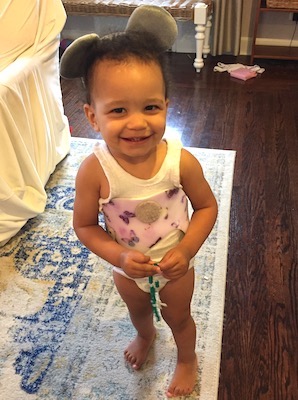
By the time of her first meeting with Dr. Hresko, Jeanne’s scoliosis had progressed to 40 degrees. “We made the decision to try bracing on the spot,” says Monica. Boston O&P is in the same building as Boston Children’s Orthopedic Center. “We walked next door and Jeanne was fitted for a brace that same day.”
Like a cast, the scoliosis brace was tailored to hug Jeanne’s abdomen, applying pressure at strategic points to help her spine grow into a straighter position. Unlike a cast, the brace would not require anesthesia, and her parents could remove it for brief periods each day.
“She didn’t like the brace at first,” says Stefan. In fact, when they returned to Boston Children’s in early September to pick up her first brace, Jeanne struggled to get comfortable for much of the two-hour drive back to Connecticut. But that same evening, she surprised her parents. After they’d removed the brace to change her diaper, she picked it up and carried it over to them so they could put it back on. “She made it easy on us,” says Stefan.
Growth plus bracing adds up to a taller, more nimble Jeanne
Jeanne grew several inches over the winter, during which she wore her brace more than 22 hours a day. The growth spurt combined with bracing had the effect her parents were hoping for: In February 2021, during a follow-up visit at Boston Children’s, they got the great news that Jeanne’s curve had been reduced to about 10 degrees. “She looked taller and more nimble to us,” says Stefan. “But we were surprised to learn how large the correction actually was.”
Jeanne will continue to wear the brace until she is at least 4. By this age, kids typically reach about half of their adult height. Assuming her spine continues to grow straight, she’ll be able spend longer periods out of the brace, until she no longer needs to wear it at all.
In the meantime, she and her family return to Boston every few months so Dr. Hresko can monitor her spine. In addition to finding an effective alternative to casting, her parents appreciate the human touch they experience there. “Everyone I’ve encountered at Boston Children’s has gone out of their way to be helpful,” says Monica. “They seem to understand that if a parent is there with their child, they need to be treated with kindness.”
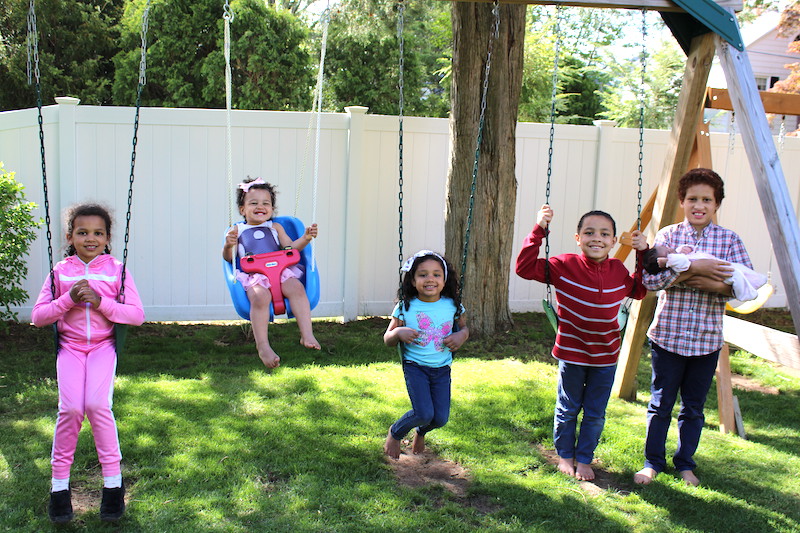
Learn more about the Spine Division.
Related Posts :
-

A modified brace and a new treatment option for infantile scoliosis
While bracing is a common treatment for adolescents with moderate idiopathic scoliosis, infantile scoliosis is typically treated with casting. But ...
-

Scoliosis bracing: How to support your child
Q&A with M. Timothy Hresko, MD and Deborah Cranford, RN Most patients with idiopathic scoliosis will never need ...
-

Ask a sports medicine specialist: Why are ACL tears so common among female athletes?
When an athlete is sprinting after an opponent who suddenly stops or changes direction, their anterior cruciate ligaments (ACLs) make ...
-

Forging a path back to school after orthopedic trauma
Orthopedic trauma can force children to miss school, sometimes for an extended period. But even when patients have regained enough ...



